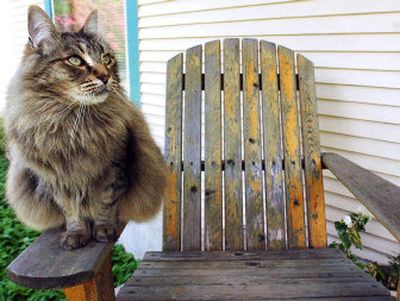Please … rid me of these fleas!

Q: My son has a very loving and caring year-old feline named “Stupid.” He was an indoor cat, until one day we came home to find him outside the house.
Now our dilemma is fleas. (Yikes!) My son loves cuddling up with Stupid at night but has been waking up in the mornings with small bites along the nape of his neck. And I and my other sons feel like we’re also being attacked by these blood suckers. What shall we do? We’ve been giving him weekly baths as well as having him wear a flea/tick collar, but to no avail. I do believe we have an infestation. — Scratching in South Carolina
A: Yeeouch! Fleas really are troublesome, especially during the warm months. It looks like you’ve got a battle on your hands.
You’ve got to wage a full-scale war against these little fiends. Take Stupid to the vet’s office for a weekend to get a full flea treatment, and while he’s gone, take every scrap of cloth in the house — bedclothes, clothing, towels, rugs, you name it — to a Laundromat. Wash them in warm water with detergent to clear out the fleas and their eggs.
It’s important to address those flea eggs because even if you repeatedly spray for live fleas, the eggs — safely tucked away under bed sheets or in an area rug — will hatch in a few days and the infestation will start up again.
So, once the cat and the clothes are away and being cleaned, thoroughly clean the house — vacuum in the corners, the rugs, the floors, even the bare mattresses, the couch cushions, everything. Immediately discard the vacuum bag (or empty the canister) in an outside garbage can. Remove everyone from the house and treat for fleas, either with store-bought products or by a professional.
Once everything has been treated, ask the veterinarian about monthly flea treatments. These are applied directly to the cat’s fur at the back of its head. It costs more than flea collars, but can be much more effective at preventing fleas.